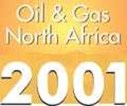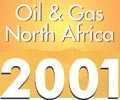BG to make major investment in Tunisian gas

By Dev George, Tunis
 Peter Haynes, like BG, which he heads in Tunisia, is an old hand in the country. Here for a decade, he has seen BG become the country's largest investor and the primary source for the country's gas requirements—some 65% at this time—most of which comes from the 100% interest Miskar gas condensate field in the Mediterranean Gulf of Gabes about 125 km offshore.
Peter Haynes, like BG, which he heads in Tunisia, is an old hand in the country. Here for a decade, he has seen BG become the country's largest investor and the primary source for the country's gas requirements—some 65% at this time—most of which comes from the 100% interest Miskar gas condensate field in the Mediterranean Gulf of Gabes about 125 km offshore.
BG which has already invested US$600 million in the development of the Miskar Field, first announced its intention to invest another $450 million in Tunisia last year during a visit to the country by BG's CEO David Varney. Haynes explained to OGO that the investment will be spread over a period of nine years and is primarily to be spent in expanding the Miskar Field and developing the recent Hasdrubal gas condensate discovery 25 km south of Miskar, which is, itself, an extension of the Miskar structure. Furthermore, he says, the funds will be utilized to carry out more exploration of the Miskar West Field and other areas within the 3,496 sq km of BG's two additional exploration permits.
The Miskar Field covers some 352 sq km and lies at 62 meters water depth. According to Haynes, it has approximately 1 tcf in gas reserves or 650 million boe—enough to meet Tunisia's gas needs for ten years—"but, with the planned further development of the field including the installation of compression, we expect that figure to go up by another 100 million bbl," Haynes said. During its lifetime, it is expected to produce more than 700 billion cf of gas.
BG is currently contracted to produce 168 million cf/d from Miskar. The new agreement extends this to 230 million cf/d on a long-term basis.
Hasdrubal
Hasdrubal is a 260 bcf gas and 25 million bbl condensate discovery southwest of Miskar. Haynes said it is part of the same reservoir complex as Miskar and that BG has drilled four wells on it so far, and is "confident we have a good understanding of the distribution of its reserves. We've got 3D seismic over the field, so we feel we're pretty well ready to develop it as soon as we believe we've got the market for it."
To the southwest of Hasdrubal is the Hasdrubal Southwest prospect, an extension of Hasdrubal that Haynes said has roughly the same amount of reserves if not a bit more but which will require appraisal wells to be sure.
"What we've got now is a Fugro Geoteam seismic vessel out there shooting a 3D seismic survey over it, and then we'll shoot another discovery, Jughurta, to the northwest of Miskar, and finally shoot Miskar again—about an 1,100 sq km program that will give us the latest data we can then use to refine development plans for Hasdrubal and improvements on Miskar. The reservoirs are fractured, and seismic imaging has not been great so far, so we're hopeful the new data will provide better guidance for development."
Haynes said that BG has applied for an extension of its four-year permit on the Ulysse prospect to provide enough time to decide what to do with it. Plans now call for drilling two wells in the area next year, one in Hasdrubal Southwest and the other probably in Jughurta. At this time, he says, BG is not considering any export possibilities, since projections in Tunisia's demand for gas show a 5% annual growth and domestic production will just about keep up with it for the next several years.
BG processes its gas at its Hannibal plant, located 22 km south of Sfax and sells it to the Société Tunisienne de l'Electricité et du Gaz, the Tunisian state electricity and gas company.
